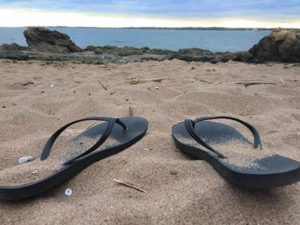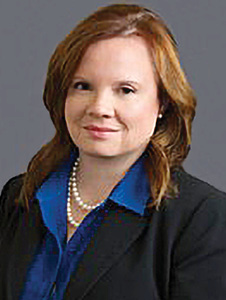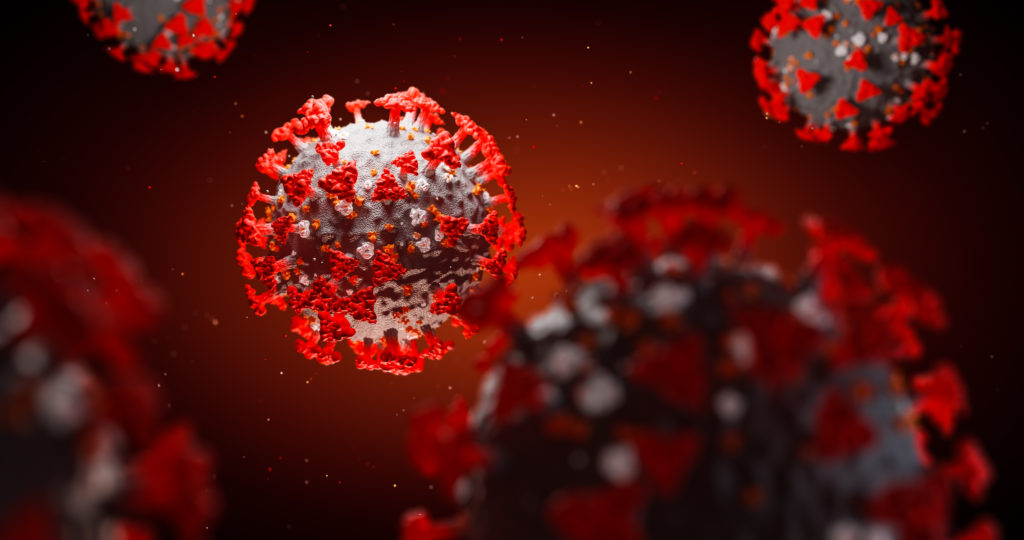New York Appellate Courts Clarify Defense-Friendly Standards on Causation
By Mohammad Haque, New York on August 1, 2022

Recently, New York’s highest court and the intermediary appellate court (Appellate Division: First Department) that hears all appeals arising from New York City’s Asbestos Litigation (“NYCAL”) have ruled that it is a plaintiff’s burden to present evidence of (1) what base line exposure is necessary to cause disease; and (2) that the exposure experienced from each product reached, or exceeded, that level sufficient to cause the disease. Furthermore, common assertions by plaintiff experts like “no safe dose” and “all asbestos is dangerous” were ruled not sufficient to meet this burden.
These were set out in decision of New York’s highest court, the Court of Appeals, in Nemeth, which set aside a jury verdict (and in which our firm submitted an amicus brief).
Although we have recognized that in any given case it may be “difficult, if not impossible, to quantify a plaintiff’s past exposure” to a toxin (Sean R., 26 NY3d at 812), our standard itself is not “impossible” for plaintiffs to meet (dissenting op at 25). We must, as always, strike a balance between the need to exclude “unreliable or speculative information” as to causation with our obligation to ensure that we have not set “an insurmountable standard that would effectively deprive toxic tort plaintiffs of their day in court” (Parker, 7 NY3d at 447). The requirement that plaintiff establish, using expert testimony based on generally accepted methodologies, sufficient exposure to a toxin to cause the claimed illness strikes the appropriate balance (see Cornell, 22 NY3d at 784). The fault here is not in our standard, but in plaintiff’s proof.
Nemeth v. Brenntag N. Am., No. 24, 2022 WL 1217464, at *1 (N.Y. Apr. 26, 2022)
In Olsen, the First Department set aside one of the most massive NYCAL jury awards to date: after remittitur, $15 million in compensatory damages and $105 million in punitive damages. The First Department held that plaintiffs failed, as a matter of law, to carry their burden to establish sufficient exposure to defendant’s talc product to cause plaintiff’s mesothelioma.
Even if it is assumed that plaintiffs presented sufficient evidence to support their mineral expert’s estimate of the amount of asbestos to which plaintiff Donna Olson was exposed each time she used J & J’s talcum powder products, plaintiffs’ medical expert never set forth a scientific expression of the minimum lifetime exposure to asbestos that would have been sufficient to cause mesothelioma, the disease in question.
Matter of New York City Asbestos Litig.(Olsen), No. 14875, 2022 WL 2812015, at *1 (1st Dept. 2022).
Olsen was the first NYCAL verdict overturned on appeal following Nemeth. However, the First Department did not stop there. It issued three more decisions clarifying and extending Nemeth to motions for summary judgment—contrary to the plaintiffs’ argument throughout New York that Nemeth applied only to post-verdict rulings.
All three cases involved claimants diagnosed with lung cancer who alleged asbestos exposure from Amtico floor tiles. The court confronted the same argument and experts on causation in each case.
In reversing the lower court’s denial of defendant’s motions for summary judgment, the First Department held that defendant made out a prima facie case that plaintiffs were not exposed to sufficient quantities of respirable asbestos from defendant’s product to cause their disease, based on a 2007 simulation study showing that cutting, scoring and disruption of its floor tile did not produce sufficient airborne asbestos above ambient levels to cause the disease.
The court held that plaintiffs failed to raise an issue of fact by failing to provide any quantification and merely arguing “no safe” levels:
Dr. Ginsburg generally concludes that “[t]here is no safe minimum level of exposure to asbestos with respect to lung cancer” and that “manipulation of asbestos containing floor tiles can result in release of asbestos fibers into the workers’ environment that are exponentially greater than the ambient level of exposure.” He also states that the asbestos process releases “visible dust” and that such dust is “certainly in dangerous concentration.” However, Nemeth holds that such broad pronouncements and conclusions will not satisfy a plaintiff’s causation burden, which is to show the levels of asbestos that the plaintiff was exposed to and that the levels are known to cause lung cancer. Likewise, to the extent Dr. Ginsberg’s [sic] conclusions are based upon the presence of visible dust emanating from an asbestos-containing product, this theory fails to satisfy a plaintiff’s burden on causation in asbestos cases. Id.
Dyer v. Amchem Prod. Inc., No. 13739, 2022 WL 2811995, at *1 (1st Dept. 2022).
The court rejected plaintiffs’ argument that defense-funded experiments invalidates their conclusions, particularly given that “[p]laintiff offered no expert to counter ABI’s calculation of decedent’s cumulative lifetime exposure, and thus no question of fact was raised as to its validity.” Killian v. A.C. & S., Inc., (Grunert), No. 114345/02, 2022 WL 2812016, at *1 (1st Dept. 2022). Although Dr. Ginsberg pointed to simulation studies measuring an average level of airborne asbestos as high as 0.27 f/cc from floor tile work, the court held that he did not provide any correlation between the asbestos fiber levels to which plaintiff may have been exposed and the amount of inhaled asbestos that would have caused decedent’s lung cancer. Pomponi v. A.O. Smith Water Prod. Co., No. 14982, 2022 WL 2811997, at *1 (1st Dept. 2022).
In each of these four cases, the First Department made clear that a plaintiff cannot establish his or her burden at trial or summary judgment (after defendant meets its initial prima facie burden), by relying on the generalized expert opinions that exposure to a toxin is “excessive” or “far more” than others and, therefore, sufficient to cause a disease. The court needs to be presented with actual quantification of the level of asbestos exposure need to cause the disease at issue and that plaintiff’s inhalation of asbestos from defendant’s product met or surpassed that level.

 It just got tougher to pin a California plaintiff’s expert down at deposition.
It just got tougher to pin a California plaintiff’s expert down at deposition. In a recent article for Mealey’s Litigation Report, Dallas partner James Lowery and associate Ted Yarbrough explain why defense of asbestos and talcum powder cases requires exploring alternative exposures. The article focuses on why alternative exposure minimizes the potential liability of each defendant, and how the alternative exposure case needs to be developed at all stages of litigation – from plaintiff’s deposition (the real first day of trial) up through trial.
In a recent article for Mealey’s Litigation Report, Dallas partner James Lowery and associate Ted Yarbrough explain why defense of asbestos and talcum powder cases requires exploring alternative exposures. The article focuses on why alternative exposure minimizes the potential liability of each defendant, and how the alternative exposure case needs to be developed at all stages of litigation – from plaintiff’s deposition (the real first day of trial) up through trial.

 Out of state plaintiffs flock to California courts to take advantage of its laws, including its more relaxed causation standard for asbestos injuries. However, a recent California appellate decision highlighted the fact a plaintiff may not evade the application of his own state’s causation standard when his asbestos exposure occurred entirely in that state – notwithstanding a California venue.1
Out of state plaintiffs flock to California courts to take advantage of its laws, including its more relaxed causation standard for asbestos injuries. However, a recent California appellate decision highlighted the fact a plaintiff may not evade the application of his own state’s causation standard when his asbestos exposure occurred entirely in that state – notwithstanding a California venue.1 A California Court of Appeal has rejected a defense challenge that the defendant was assigned too high a percentage of liability (60%), because the defendant did not introduce enough evidence about other parties’ liability. The court also rejected a defense claim that the $25 million noneconomic damage award was excessive, even though it was “well beyond the normal range of awards in similar cases for similar injuries” per a survey of similar verdicts.
A California Court of Appeal has rejected a defense challenge that the defendant was assigned too high a percentage of liability (60%), because the defendant did not introduce enough evidence about other parties’ liability. The court also rejected a defense claim that the $25 million noneconomic damage award was excessive, even though it was “well beyond the normal range of awards in similar cases for similar injuries” per a survey of similar verdicts. The Iowa Court of Appeals affirmed a district court’s decision that Iowa’s Section 686B.7(5), enacted in 2017, barred claims against a premises owner and installer of asbestos products. The statute provides: “A defendant in an asbestos action or silica action shall not be liable for exposures from a product or component part made or sold by a third party.”
The Iowa Court of Appeals affirmed a district court’s decision that Iowa’s Section 686B.7(5), enacted in 2017, barred claims against a premises owner and installer of asbestos products. The statute provides: “A defendant in an asbestos action or silica action shall not be liable for exposures from a product or component part made or sold by a third party.” The United States Environmental Protection Agency (“EPA”) is currently conducting a chemical risk evaluation of asbestos. The EPA’s 310-page Draft Risk Evaluation for Asbestos (the “Draft”) identified risks for a variety of potential asbestos exposures. The Draft found that acceptable cancer risks were exceeded for much work with automotive brakes and clutches. If these findings are adopted in the final evaluation, defendants can expect asbestos plaintiffs’ counsel to trumpet the evaluation to juries, even though (as described below and detailed in the
The United States Environmental Protection Agency (“EPA”) is currently conducting a chemical risk evaluation of asbestos. The EPA’s 310-page Draft Risk Evaluation for Asbestos (the “Draft”) identified risks for a variety of potential asbestos exposures. The Draft found that acceptable cancer risks were exceeded for much work with automotive brakes and clutches. If these findings are adopted in the final evaluation, defendants can expect asbestos plaintiffs’ counsel to trumpet the evaluation to juries, even though (as described below and detailed in the  The Advisory Committee on California Civil Jury Instructions is considering changes to many instructions, including two on causation: CACI 435 (substantial factor in
The Advisory Committee on California Civil Jury Instructions is considering changes to many instructions, including two on causation: CACI 435 (substantial factor in 